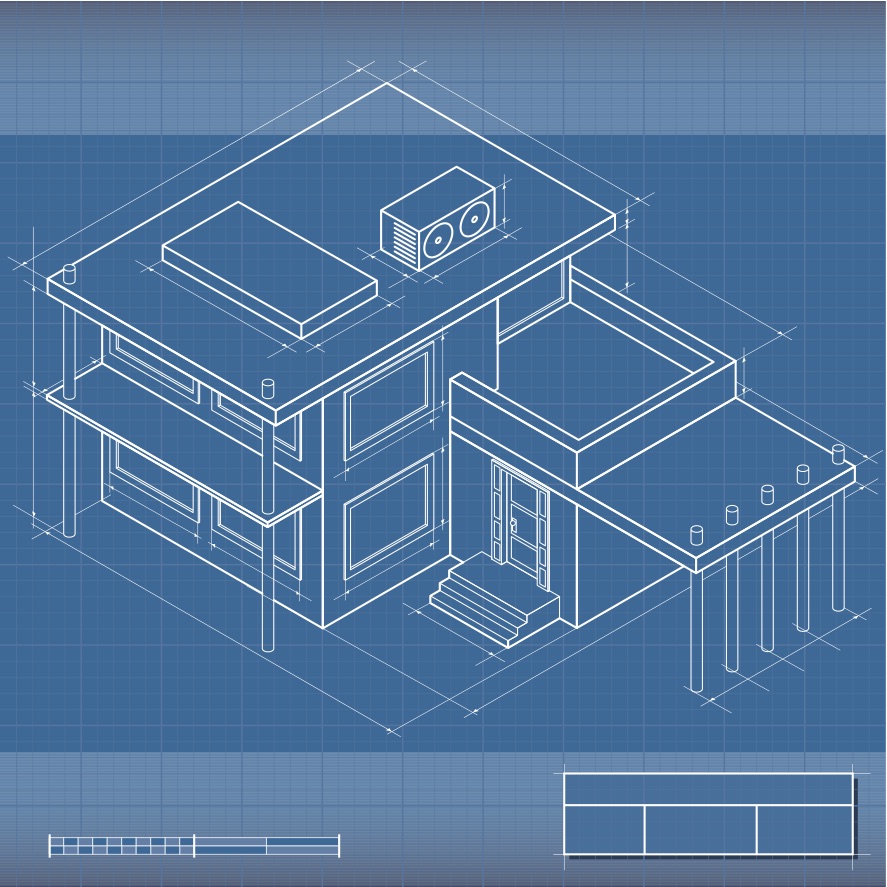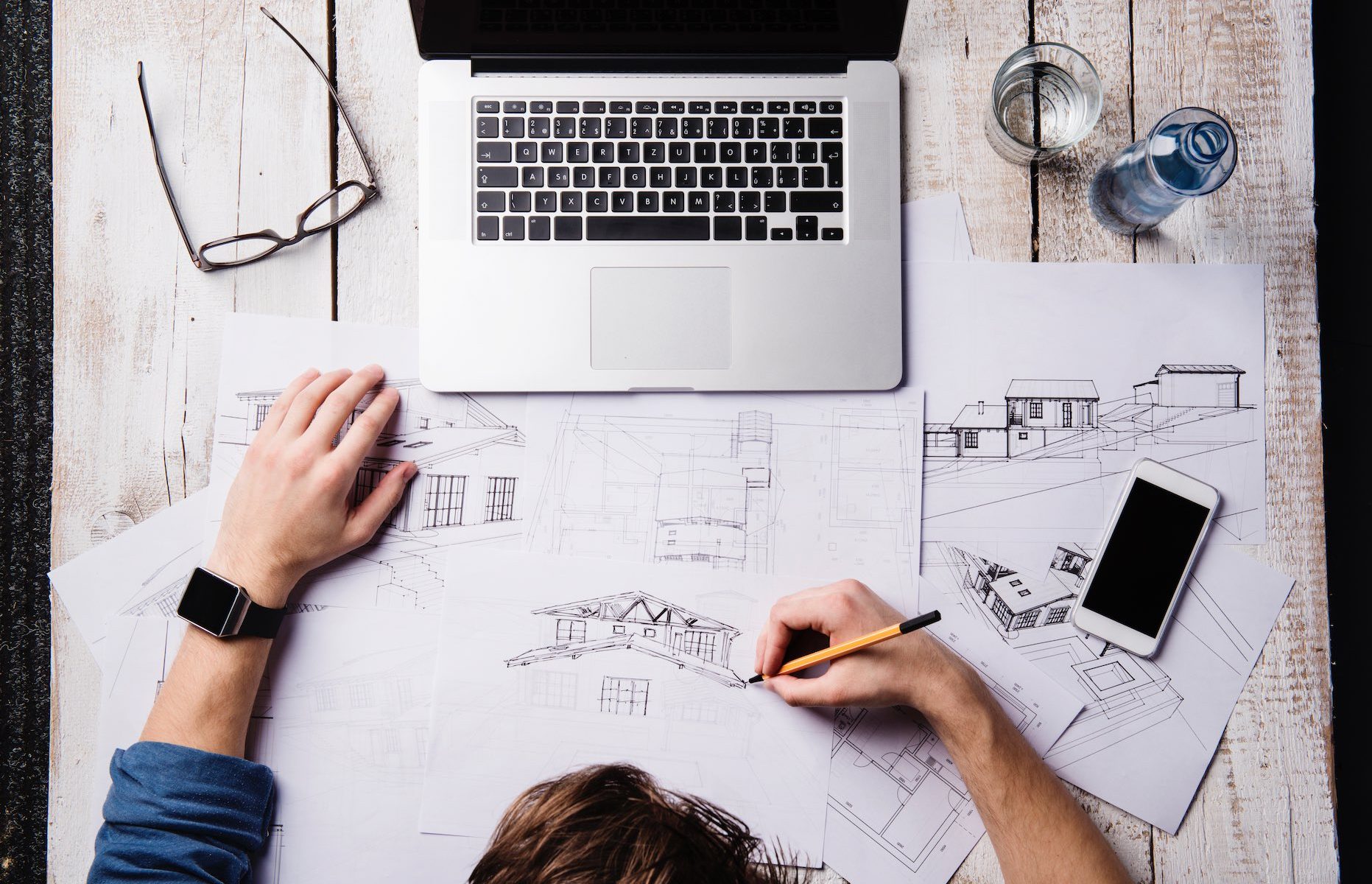Dream home or disaster zone?
The idea of building your own home has romantic appeal – it is a home that you have helped design and create. You can pick the spot, shape the space and adapt it to your needs. However, it can also be a costly and – occasionally – disastrous option if it isn’t planned carefully. What should you consider?
In some ways, finding the plot on which to build is little different from finding a home: you’re still looking for the right location, near the right schools (if necessary) or other amenities, including convenient access to one’s workplace. The advantage is that you don’t have to look through someone else’s unfortunate interior design taste to see a home’s potential.
However, you will have a range of other considerations to assess. Is the land suitable for building? There will be rules governing the size of property that can be built on a particular piece of land. You’ll need to make sure that a construction permit has been already granted, or to make it a condition of the purchase. Next, is the land prepared? Are water mains, electricity and perhaps gas already hooked up? If not, this can be very expensive. A notary, the local municipal authority and the land registry service should help resolve these questions.
You can generally find land for sale both through conventional estate agents and specialists. It is worth identifying leading agents in your chosen area. You should also develop a working knowledge of house prices in the location. Are you likely to get back what you spend? That can help impose discipline on your readiness to run up costs. This is a particularly important issue if, as in Luxembourg in early 2023, there are signs that years-long home price growth may be petering out.
Bespoke or off-the-shelf?
If you want to create a home that is truly customised and unique, you can opt to select all the professionals and contractors involved individually – the architects, designers and builders who will draw up the plans through their discussions with you.
The alternative is turnkey construction, where a third-party specialist company employs the architects and builders, and manages the process on your behalf. The price will be set when you sign the contract and should not change. You may have fewer options with this type of construction, but you have a single point of contact and one contract, so managing the process should be easier.
Recommendations from previous clients are invaluable; talk to them in person if possible.
Should you decide to go it alone, architects should be members of Luxembourg’s Ordre des Architectes et des Ingénieurs-Conseils. However, you will need to find one that has worked on your type of construction project before, which means looking at their back catalogue of work, understanding the type of houses they have experience in building and their style. Recommendations from previous clients are invaluable; talk to them in person if possible.
Architects should help you realise your ideal home. That means setting parameters for what is possible and what is not, providing guidance on design and helping you create the perfect living space within the constraints of the site and your budget. It should be clear from the early meetings whether the architect is a good fit for your project. Don’t be afraid to make a change if you think it’s not working, because it’s easier to do this earlier rather than later, and definitely cheaper.

Finding a builder
The architect should be able to put the project out to tender among a number of recommended builders, although you can also source the contractor yourself. While online services can help you put together the right team, nothing beats a personal recommendation from friends or family.
Projects do go wrong, and it is worth being prepared.
In opening negotiations with a builder, it is good to have as detailed a brief as you can create, including drawings, which leave less room for misunderstanding and error. There is a long and distressing history of construction projects that have gone wrong, and it is worth being prepared for the most common pitfalls. Recommendations are particularly important in choosing a builder because if the chosen firm collapses – a particular risk in the construction industry – it will certainly result in delay and probably significant additional cost. The same applies to turnkey construction.
You should obtain quotes from at least three builders. Ask for a breakdown of costs, or ensure that costs are assigned to different parts of the construction brief. The cheapest offer may not be the best. It’s worth asking why they are cheaper, and check whether they are cutting corners – are they removing rubbish, for example, or using cheaper materials or fittings? Again, talking to previous customers is a great insurance policy.
Should you appoint a project manager?
Project managers can be worth their weight in gold, but they can also be an expensive waste of time. A bad manager can be an active hindrance to the smooth progress of a home’s construction, spreading miscommunication and bad feeling between the owner and the contractors. The ideal project manager will listen to your views and communicate them effectively, pick up on the details that you might not identify, and ensure that mistakes are rectified quickly.
The decision on whether to appoint a project manager will depend on the amount of time you can devote to overseeing the process, as well as the complexity of the project – one consideration is whether you are in the same country. Ultimately, the relationship will be crucial: there is always stress at times in a new construction project, and trust is essential.
Ultimately, the relationship will be crucial: there is always stress at times in a new construction project, and trust is essential.
For most people, the interior is the most important part of any project to build a home. It is worth drawing up some ideas in advance, as these are liable to affect where you position electric sockets, boilers, telecommunications cable entries and lighting. It should also enable you to identify difficult spaces in advance and discuss how to tackle them with your architect and builder. Interior designers, where used, should be brought into the project early to ensure your ideas for the living space are compatible with the construction parameters.

Paying for it
It is possible to obtain mortgage loans for new-build houses, although the process is more complicated than for existing homes. Lenders will often release the capital only in stages as construction progresses. They will want to see a tiered completion schedule, and to ensure that the builder is trustworthy and competent. In all circumstances, whether financed by a loan or not, payment should only be released step by step after each stage of the work has been completed and checked by you or your project manager.
Depending on where the home is being built, the government will occasionally provide incentives – discounts on property tax, for example, or tax credits. These can be valuable and it is worth looking at the options before you launch any construction project.
Building your own home is undoubtedly complex and there will certainly be difficulties along the way. However, in the end, you may get the home of your dreams.


 Mortgage
Mortgage Personal loan
Personal loan Savings
Savings